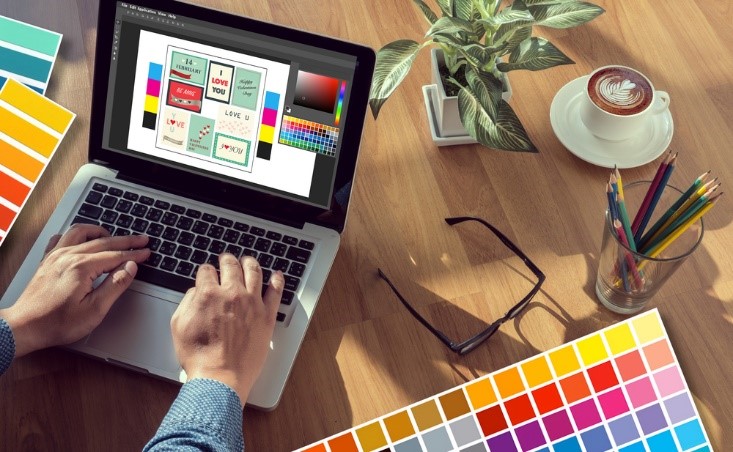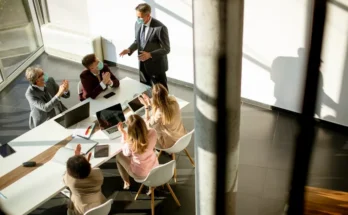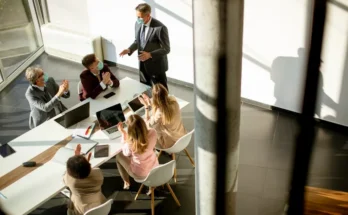Whether you’re presenting your research at a conference or sharing your work with colleagues, poster sessions can be great for getting your ideas across. But if you’re not used to creating posters, the process can seem daunting.
With a few simple tips, you can create an effective poster that will catch people’s attention and help you communicate your ideas. You can create a visually appealing and informative poster by following these steps. Here’s all you need to know.
6 Easy Steps to Create an Effective Poster
-
Select a Format
Always start by reaching an agreement while selecting the type of format for the poster. Is a large poster necessary to get people’s attention when they walk by? What about a flyer that may be printed in a huge number of copies and distributed alongside the booklet at the same time?
The purpose of a graphic is to publicize an upcoming event or supply the viewer with information; you must determine the appropriate dimensions, layout, and general structure of the graphic. You should have a structure in mind before you start developing your thoughts. This will help you pick a suitable format to create an effective poster.
-
Pick Eye-Catching Colors
There is no one sure-fire way to create an effective poster. You can also hire a logo design company to help you create effective posters and flyers. These professionals will guide you every step of the way and show you unique color palettes to uplift the look.
However, using colors effectively can help your poster attract the audience and be more effective. Colors can evoke different emotions and reactions, so it’s important to use them wisely.
Some tips for using colors effectively in your poster design:
- Use a limited color palette. This will make your poster look more cohesive and professional.
- Use contrasting colors. This will make your poster more appealing.
- Use warm colors to create a positive feeling and cool colors to create a more subdued feeling.
When choosing colors for your poster, it’s important to think about the message you want to convey. Bright colors such as yellow or orange can create a sense of urgency or excitement. Sober colors such as blue or green can be used to create a sense of calm or relaxation.
-
Content Brainstorming
Now it’s time to put the thoughts on paper. Using a brief, memorable phrase is a terrific way to entice people to read the details. A single glance will do if you’re working on a large poster. Keep it simple. Write in a clear, concise manner with all the information your readers require.
To create an effective poster, you must include information such as the event’s date, time, and location. To keep things clean and organized, don’t bother about creating a template for your wording just yet; you’ll do it later.
-
Find a Template
At this point, all of the fun begins! Find the template that calls to you by browsing through pre-designed ones. For example, a poster for a children’s event should be bright and joyful, whereas a flyer for a wine tasting should be more sophisticated and muted. The template should match the occasion. For certain events, you can even discover templates.
Remember that no matter what template you choose; every aspect can be customized to fit your requirements. You can change the background, graphics, colors, or even move the text boxes around to fit your content.
-
Choose graphics and typography wisely
Next, you’ll need to work with photos and typography. Your poster design should start with a text. Without this, your audience will struggle to grasp your message.
If you’re unsure where to start, start with a catchy slogan/title/name in large, clear type. Even if some of the features are little or off-center, your text should be readable and compliment the mood of your poster. The use of varying fonts is a powerful way to attract the audience.
Using photos and images helps to create an effective poster. You might use a photograph or graphics to communicate your message. Upload your images or utilize the template’s image placeholders. Use Image Frames/Shape Masks to change the look of your photos.
-
Decluttering is Essential
Designers often create posters to communicate a message in a visually appealing way. While this is an important goal, it can be hindered by the amount of clutter on the poster. Too much information can be overwhelming. This may distract the audience from the main message. If you want to create an effective poster, you need to start with a clean slate.
Here are a few tips for decluttering your design:
- Determine the purpose of the poster
- Gather all the materials you need
- Start by getting rid of anything that’s not necessary.
- Simplify your layout and keep it as organized as possible.
- Use a consistent typeface throughout your design.
- Make use of the white space effectively
Conclusion
This article provides a step-by-step guide on how to create an effective poster. By following these simple steps, you can create a poster to get your message across to your audience.




